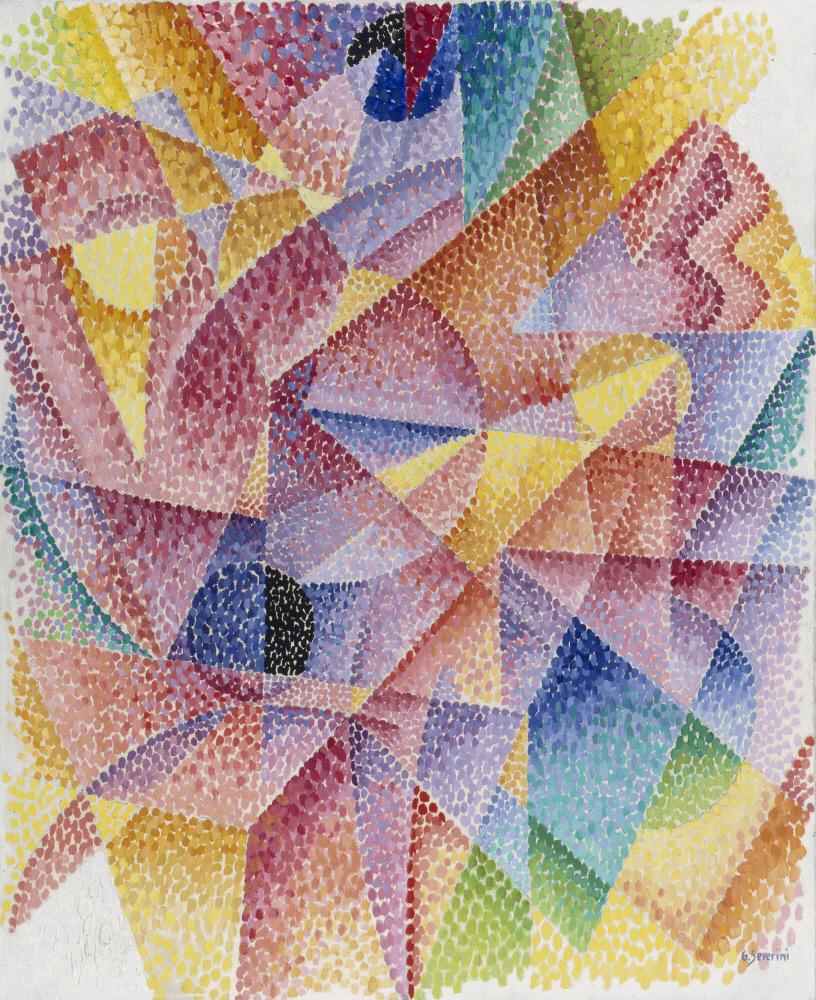|
By Annette Goldmacher
We had to get the group’s attention quickly, making them care about the object from the beginning. To do this, we brought to mind a colorful scene for our fellow attendees- dancing in a club. We asked them to picture the lights dancing along with them, flashing and reflecting off of any shiny surface from the mirror behind the bar to the glasses of the person next to them. Then, we had them really look at the painting.
Our group chose Gino Severini’s Expansion spherique de la lumiere (Centripede et Centrifuge) [Spherical Expansion of Light (Centripetal and Centrifugal)]. The piece is bright and colorful with a focus on the movement and dynamism of light. We hoped that the idea of dancing with friends and having fun had put our group in a positive mindset for experiencing this piece. They observed that it looks cheerful and that’s exactly what we hoped to hear. We wanted this because it set up an opportunity to redirect them to a new way of thinking about the piece. Who made it and when? We chose to use the contradiction between the appearance of this painting and its artist’s ideologies. As we’d already established, the painting presents itself as a cheerful and bright work, which often brings positive reactions from its viewers. However, Gino Severini was a Futurist. In 1909, Filippo Tommaso Marinetti published the “Manifesto of Futurism” in Le Figaro, where it was the front page of the issue (see below for The Manifesto’s full translated contents). For the Creativity Incubator presentation, we chose to read aloud those points that are highlighted. The illumination (pun intended) of this artist’s political leanings changes the audience’s experience of the piece. So, I read to them from the Manifesto - see the whole text here. These are two of the excerpts that I chose: 9. We want to glorify war - the only cure for the world - militarism, patriotism, the destructive gesture of the anarchists, the beautiful ideas which kill, and contempt for woman. 10. We want to demolish museums and libraries, fight morality, feminism and all opportunist and utilitarian cowardice. We didn’t want to “ruin” the piece for anybody, but we wanted to make them think about the painting not only as a work of art, but also as the product of a particular mind. In the end, the artist and his ideologies can inform our understanding of a piece. If our colleagues had known about Severini’s personal beliefs, would they still have thought this piece was so lighthearted and cheerful, at the beginning of our discussion? I can't claim to speak for everybody, but I'm betting that we changed a few perceptions. So, the next time you go into a museum and see something cheerful and positive, remember that liking the piece doesn’t always mean that you’d like the person who made it. Annette Goldmacher is the Assistant Educator at the Picker Art Gallery and Longyear Museum of Anthropology Colgate University. Formerly, she was the CAE Art Appreciation Instructor at Munson-Williams-Proctor Arts Institute, our host site for the Mohawk Valley session of the Creativity Incubator. Image courtesy of MWPAI Online Collections
0 Comments
Your comment will be posted after it is approved.
Leave a Reply. |
Archives
October 2020
Categories
All
|

 RSS Feed
RSS Feed